The Iraqi city of Erbil is truly magnificent – and in many ways. With the settlement origins dating back at least 8,000 years, it is one of the world’s oldest continuously inhabited cities in the world. The modern city developed around the famous Citadel of Erbil, the town’s ancient core that has been present since the dawn of ancient history. As such, it is a true puzzle for archaeologists and historians, allowing a glimpse into the numerous cultures and civilizations that dwelt in the region.
Erbil is the capital of Iraqi Kurdistan, and is one of the most important sites for the Kurdish peoples. But nowadays, the citadel is struggling to survive modern times. Continuous efforts towards its preservation and reconstruction are instilling hope in the people that this ancient gem will once more shine in its full splendor.
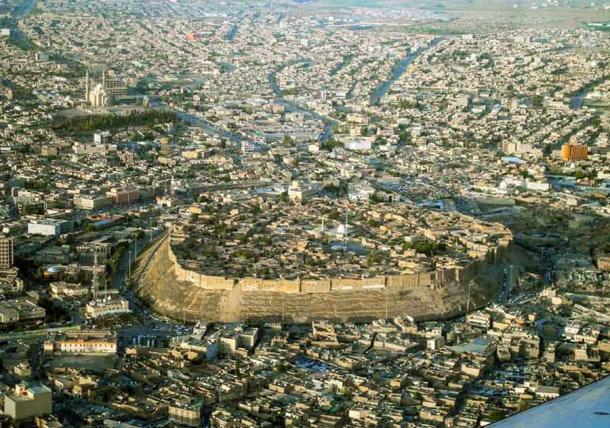
The ancient Citadel of Erbil in Iraq. (jan kurdistani / CC BY-SA 2.0 )
Ancient Origins of the Citadel of Erbil
Erbil is the third largest city in Iraq, and the regional center of the Kurdish people, numbering some half a million citizens. The densely packed streets and thousands of buildings all stretched out radially from the town’s centerpiece – the mighty Erbil Citadel. This imposing hill settlement is a town within a town, stretching out over more than 10 hectares (24.7 acres), with hundreds of buildings closely packed together within the protective embrace of the ancient, fortified walls.
The Citadel of Erbil is a classic fortified settlement built with purpose. It sits perched on top of an egg-shaped tell. In archaeology, a tell is a steeply rising hill, usually created by many generations of people living on the same location, constantly rebuilding upon previous layers. This means that numerous civilizations and cultures have inhabited Erbil throughout its 8,000-year-old history all built on top of each other.
Traces of Sumerian, Assyrian, Babylonian, Greek, and Arabic settlements have all been found in the many layers beneath the present surface of the citadel. Of course, the sheer age of the tell makes it difficult for archaeologists to fully dissect this gigantic mound. It is certain, however, that each previous culture’s remnants are buried and built upon. This makes the Erbil citadel a true archeological sandwich!
It is important to note that the Citadel of Erbil is not really a citadel. It’s not a fortress per se, but simply gives that impression. This is because of the continuous wall of 19th century facades that completely surrounds the many houses of this hill town. The wall, together with the grandiose gateway, gives the visual impression of fortified walls, even if this is not the case.
In fact, much of what remains of the citadel dates to more modern times. From a bird’s eye view, one can see the unique fan-like pattern and the radial design. These are the remnants of the late Ottoman phase, when Erbil was conquered by the Ottoman Turks in 1851. However, there is more than meets the eye. Even if the buildings and streets of the present-day citadel are only several centuries old, the secrets hidden beneath the ground whisper of truly ancient times, when primordial civilizations dwelt in the region.
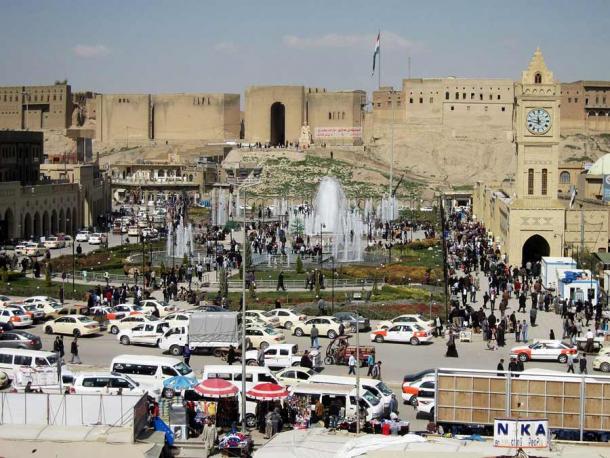
The walls of the Citadel of Erbil in Iraq. (Wahlen / CC0)
The World’s Oldest Continually Inhabited City
It is widely agreed that modern Erbil directly corresponds to the most ancient city of Arbela , inhabited as early as the Neolithic period. Due to erosion and natural processes, numerous pottery shards can be found on the steep slopes of the tell mound. Some of them are indicative of the classic Neolithic pottery styles, but no conclusive dating has been done.
However, pottery fragments that can be positively dated belong to the Chalcolithic (Copper Age) period, with clear resemblance to the Uruk and Ubaid prehistoric period of Mesopotamia, have been discovered. With all this evidence, Erbil citadel has been repeatedly dubbed the “world’s oldest continuously inhabited site.”
This is what archeology tells us – and there is no mistake to the venerable old age of the site. But what does historiography say? The earliest written evidence of Erbil can be dated to 2,300 BC. The town is mentioned in the famed Ebla Tablets , a collection of clay tablets discovered in 1974 in the remnants of the ancient city of Ebla in Syria. Two references to a town called Irbilum can be found in the inscriptions, and the scholars agree that this is a reference to Erbil.
There is no mistaking the strategic importance of the site. The hill town of ancient Erbil was situated between the rivers Zab and Zab Minor, both of them tributaries to the famed River Tigris. What is more, Erbil is considered a “gateway city” that leads to the Taurus Zagros mountain range. The mound on which it is situated is in the simplest terms a heap of archeological remains. It rises some 25 to 32 meters (82 and 105 ft) above the surrounding plain, and offers a commanding view over the area.
The Citadel of Erbil covers the surface area of nearly 150,000 square meters (1,614,587 sq. ft.), with steep sides that vary from 35 to 45 degrees. Surveys and excavations confirmed that natural soil was found at a depth of 36 meters (118 ft) below the present top surface of the mound. This means that the sheer wealth of archeological remains that hides within the huge mound is, to put it simply, incalculable and priceless. However, digging up the entire citadel is impossible, which means that the secrets it hides will forever remain hidden.
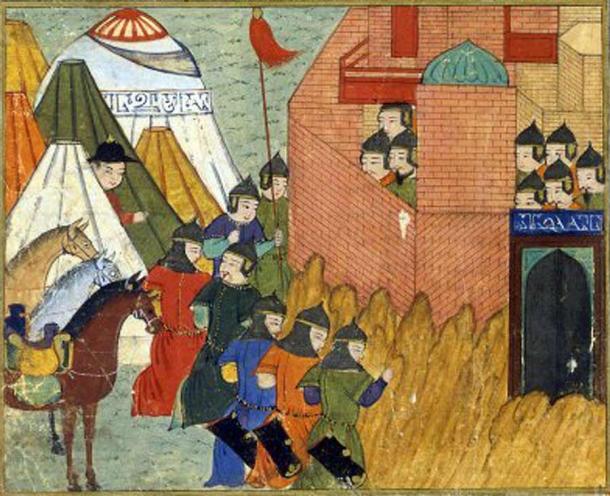
The Mongol siege of Arbil, at the Citadel of Erbil. ( Public domain )
From Sumerians to Babylonians, and all the way to the Ottomans
We can only realize the potential wealth of archeological remains beneath the Citadel of Erbil once we understand its age and the many civilizations that lived here. Throughout its long history, the citadel was home to Sumerians, Akkadians, Hittites, Assyrians, Babylonians, Achaemenids, Parthians and Greeks, Romans and Sassanids, Muslims, Timurids, the Mongols and the Ottomans, and now the Kurds. Centuries upon centuries of human habitation, of battles and sieges, declines and ascents, of razing down and building anew. A true multi-layered and delicious archeological cake, a dessert that is out of reach for all curious minds.
Some of its earliest history known to scholars can be dated to around 3000 BC, when it was under Sumerian rule. Then, the time of the Akkadians came, and the rise of the Akkadian Empire (2335 to 2154 BC): both the Akkadian Semites and the Mesopotamian Sumerians were united under one rule. This brought new life into Erbil, contributing to its importance even more.
The next mention we find is related to Erridupizir, an ancient King of Gutians in Sumer, who conquered Erbil in 2200 BC. Then, during the era of the 3rd Dynasty of Ur, also known as the Neo-Sumerian Empire, near the end of the 3rd millennium BC, Erbil is mentioned in historical records with increased frequency. It is known that the famed King Shulgi of Ur conquered and destroyed Erbil, and the city was later incorporated into his realm.
Next we hear of Erbil is in relation to the conqueror Shamshi-Adad, an Amorite ruler who won over a number of ancient cities. Following his rule, in the 2nd millennium BC, Erbil was ruled by the Assyrians, and became a town from which armies departed to the east.
During the rule of Assyrians, Erbil – then called Arbela – was a very important political and religious center, a place of thriving communications and a junction town on the East and West trading routes. It was especially important in the Neo-Assyrian period, in particular during the time of the legendary King Ashurbanipal, during his reign from 669 to 627 BC.
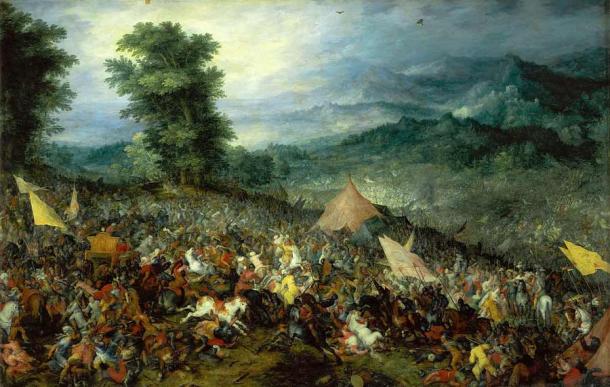
The Battle of Gaugamela, fought on the flat plains around Erbil, by Jan Brueghel the Elder. ( Public domain )
A Strategic Importance That Never Declined
In 331 BC, one of the greatest and most famed battles of antiquity was fought on the flat plains around Erbil. That was the Battle of Gaugamela , in which the forces of Alexander the Great and the Persian King Darius III clashed in a decisive battle. Following these events, in the decades following the partition of Alexander’s Empire, Erbil was still a town of regional importance, and was incorporated into the Seleucid Kingdom.
Following centuries saw powerful nations fighting over control of Erbil and its citadel. The Romans and Parthians frequently clashed over it. From 1st century AD and onwards, the citadel of Erbil was an important refuge for Christians, and would remain a center of this religion for centuries after, even under Muslim rule.
Today’s citizens of Erbil are majority Kurds and the citadel is a key symbol of their identity. They know it as Qelay or Qala’t, which roughly translates to “castle” or “citadel”. The tell is surrounded by the massive expanse of modern Erbil, which somewhat diminishes its grandeur and height. The settlement within the citadel itself houses some 322 groups of buildings, all huddled closely together and separated by narrow, crisscrossed streets.
There are also several palaces, four mosques with their towering minarets, and even some Ottoman baths. Most of these buildings can be traced back to the eighteenth century and the Ottoman rule. The distinct Ottoman urban plan and form can be seen, both in the buildings and the street patterns. All of these maze-like streets and cul-de-sacs are radiating from a single point of origin – the Grand Gate that is flanked by two steep driveways, allowing entry into the mound settlement itself.
In many ways, the Citadel of Erbil is still growing. Just like all tell mounds tend to do, continual habitation only contributes to its size, age, and archeological importance. Sadly, the citadel of Erbil is in a dire state, with many of the buildings and walls requiring urgent reparation and restoration. Many of the houses here do not have proper drainage, electricity, or sanitation. Furthermore, the 20th century saw the addition of streets on top of the tell, which allowed car traffic. This further contributed to the deterioration of this historic site.
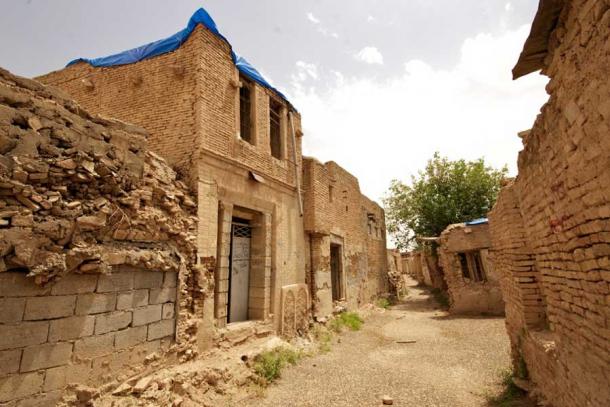
Huge investment for restoration is urgently needed in the Citadel of Erbil. ( Calypte / Adobe Stock)
Hasty and Much Needed Restoration Work
Luckily, recent developments in Iraq allowed for greater focus to be placed on this site. In 2010, Erbil’s citadel was added to the tentative list for inclusion on UNESCO’s World Heritage Sites , and a special High Commission for Erbil Citadel Revitalization (HCECR) was founded, headed by UNESCO specialists. What is even better, more than $13 million (£9.6 million) were allocated in funds for the preservation of the citadel.
All of this is a great opportunity for the salvation of the tell and its great historic potential. Sadly, this meant that around 840 families living on the site had to be evicted, after many generations of habitation. Still, the restoration work is – although ongoing – very slow. After decades of conflicts, Iraq is still struggling, and sadly, archeology and restoration are not a high priority.
To add to the bad state is demolition . Iraqi officials simply had to destroy many old houses and mosques within the Citadel of Erbil in order to create a new road for cars. Other buildings, old and often abandoned, are threatening to cave in and fall. And all this means that the Iraqis really need all the help they can get in order to protect this site of enormous significance. The government plans for 50 families to move in once the citadel is restored, emphasizing that the area needs to be looked after with great care.
Top image: The walls of the ancient Citadel of Erbil in Iraq as seen from the bazaar. Source: Levi Clancy / CC BY-SA 4.0
By Aleksa Vučković
 RSS Feed
RSS Feed















 January 5th, 2022
January 5th, 2022  Awake Goy
Awake Goy  Posted in
Posted in  Tags:
Tags: 













